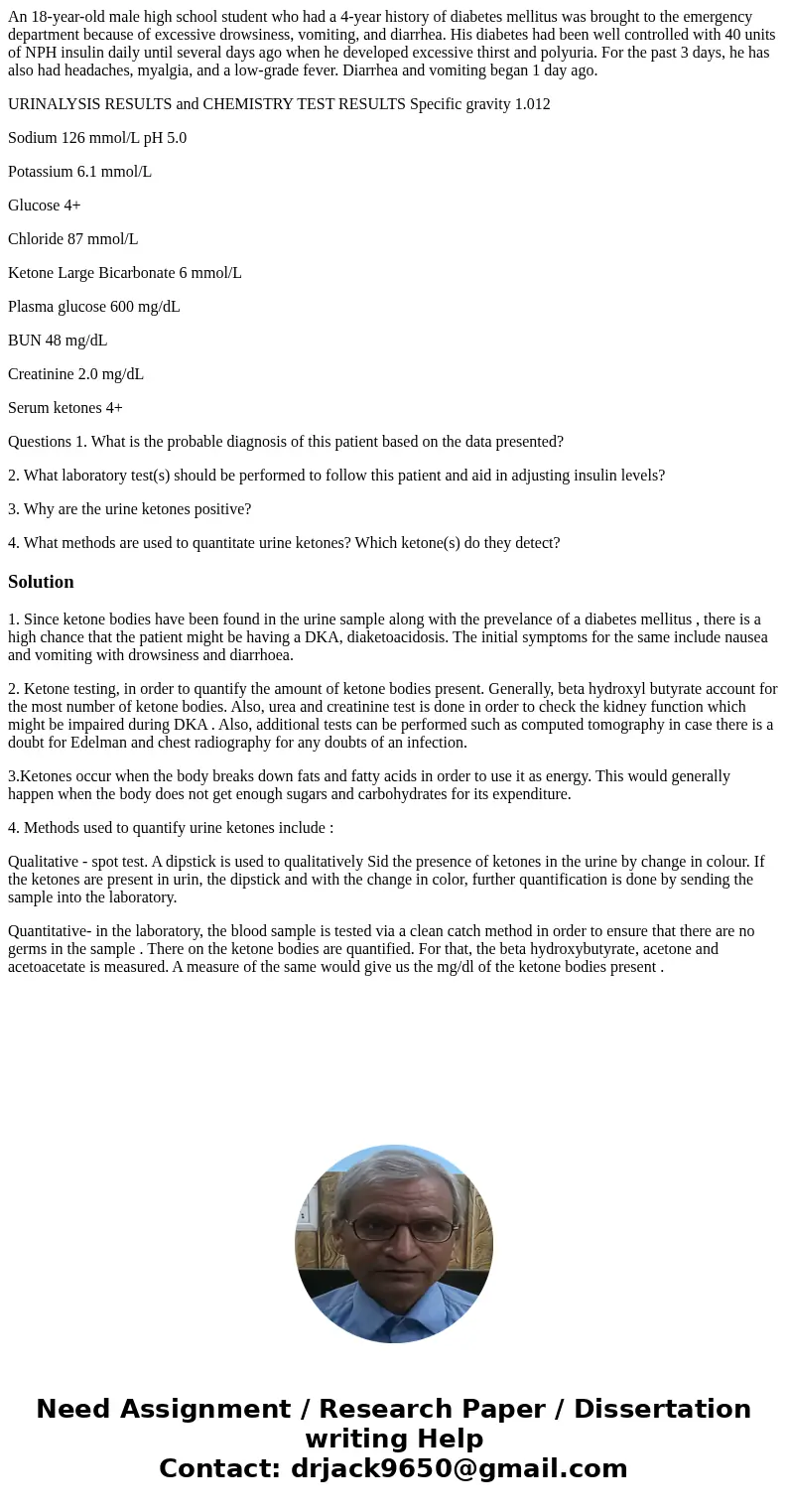An 18yearold male high school student who had a 4year histor
An 18-year-old male high school student who had a 4-year history of diabetes mellitus was brought to the emergency department because of excessive drowsiness, vomiting, and diarrhea. His diabetes had been well controlled with 40 units of NPH insulin daily until several days ago when he developed excessive thirst and polyuria. For the past 3 days, he has also had headaches, myalgia, and a low-grade fever. Diarrhea and vomiting began 1 day ago.
URINALYSIS RESULTS and CHEMISTRY TEST RESULTS Specific gravity 1.012
Sodium 126 mmol/L pH 5.0
Potassium 6.1 mmol/L
Glucose 4+
Chloride 87 mmol/L
Ketone Large Bicarbonate 6 mmol/L
Plasma glucose 600 mg/dL
BUN 48 mg/dL
Creatinine 2.0 mg/dL
Serum ketones 4+
Questions 1. What is the probable diagnosis of this patient based on the data presented?
2. What laboratory test(s) should be performed to follow this patient and aid in adjusting insulin levels?
3. Why are the urine ketones positive?
4. What methods are used to quantitate urine ketones? Which ketone(s) do they detect?
Solution
1. Since ketone bodies have been found in the urine sample along with the prevelance of a diabetes mellitus , there is a high chance that the patient might be having a DKA, diaketoacidosis. The initial symptoms for the same include nausea and vomiting with drowsiness and diarrhoea.
2. Ketone testing, in order to quantify the amount of ketone bodies present. Generally, beta hydroxyl butyrate account for the most number of ketone bodies. Also, urea and creatinine test is done in order to check the kidney function which might be impaired during DKA . Also, additional tests can be performed such as computed tomography in case there is a doubt for Edelman and chest radiography for any doubts of an infection.
3.Ketones occur when the body breaks down fats and fatty acids in order to use it as energy. This would generally happen when the body does not get enough sugars and carbohydrates for its expenditure.
4. Methods used to quantify urine ketones include :
Qualitative - spot test. A dipstick is used to qualitatively Sid the presence of ketones in the urine by change in colour. If the ketones are present in urin, the dipstick and with the change in color, further quantification is done by sending the sample into the laboratory.
Quantitative- in the laboratory, the blood sample is tested via a clean catch method in order to ensure that there are no germs in the sample . There on the ketone bodies are quantified. For that, the beta hydroxybutyrate, acetone and acetoacetate is measured. A measure of the same would give us the mg/dl of the ketone bodies present .

 Homework Sourse
Homework Sourse